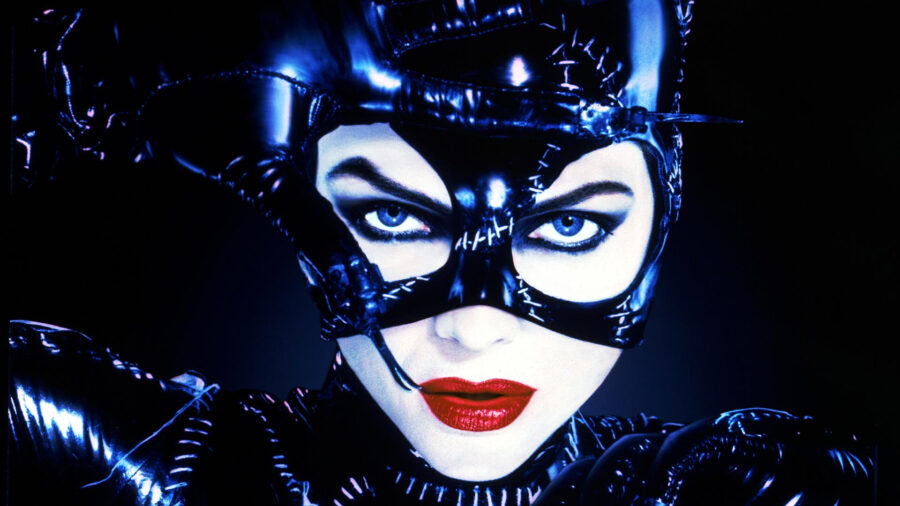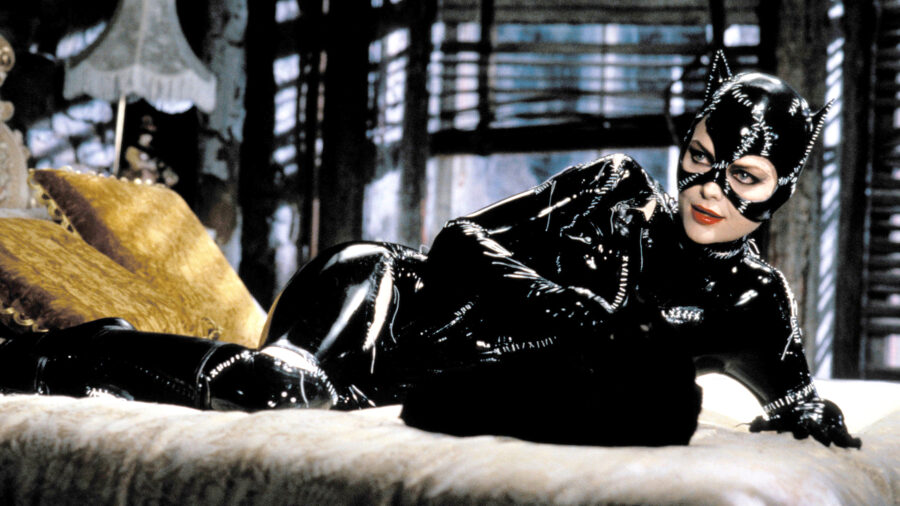How Michelle Pfeiffer Fit Into Her Skin-Tight Catwoman Costume
This article is more than 2 years old

Michelle Pfeiffer may not have been the first actress to play Catwoman, but it is likely that she is the most iconic. Ever since the release of Tim Burton’s film Batman Returns in 1992, she has been associated with the sexy yet sympathetic villain (or antihero, depending on the portrayal) and, more to the point, with the black latex outfit worn by the character. However, according to an interview with The Hollywood Reporter, Michelle Pfeiffer says the Catwoman costume was the most uncomfortable she ever had to wear and required baby powder and silicone spray to get into.
Michelle Pfeiffer’s Catwoman suit was designed by Bob Ringwood and Mary E. Vogt, with creative contributions from director Tim Burton. Reportedly, Burton was the one who came up with the idea for the costume to heavily feature stitches (which he somehow associated with calico cats), which was very difficult for Ringwood and Vogt to achieve. More than anyone else, Michelle Pfeiffer struggled to deal with the Catwoman costume, given that she was the one who had to wear it.

According to Michelle Pfeiffer, the costume was tight enough to feel like a “second skin,” but it also caused her to break out in rashes on occasion. Even more troubling, the tightness of the mask constricted her vocal cords and diminished her ability to speak, while the corset of the outfit hampered her breathing, and finally, she could barely hear through the latex. With all of this in mind, it is phenomenal that she could do anything in the costume, let alone the stunts and bullwhip action.
Interestingly, the costume was not actually designed for Michelle Pfeiffer to be Catwoman; originally, Annette Bening was cast as Batman Returns’ Selina Kyle but had to bow out due to pregnancy. The latex outfit was built to Bening’s body, rather than Pfeiffer’s, which apparently actually allowed her some greater range of motion (which, it sounds like she needed all she could get). When Michelle Pfeiffer replaced Bening as Catwoman, the designers simply modified the costume, rather than creating an entirely new one.
While the costume in the narrative of the film was stitched together by Michelle Pfeiffer after her resurrection via alleycat (and symbolically represents her fractured state of mind, what with the stitches), somewhere between 40 to 70 costumes were manufactured for the production of Batman Returns. Apparently, Pfeiffer’s skin oils could damage the costumes to the point of unusability, and it is probably safe to assume some of the gymnastic action took out a few copies, too.
Batman Returns was a huge commercial success in 1992, though not to the level of the 1989 Batman film, and confused both critics and audiences with its dark, violent tones. Michael Keaton is set to return to the role of Batman in the upcoming Ezra Miller Flash movie for the first time in decades, while Michelle Pfeiffer has passed the role of Catwoman onto a series of actresses including Anne Hathaway and Zoe Kravitz. For their sake, hopefully, costume technology has gotten a little less sweaty.











